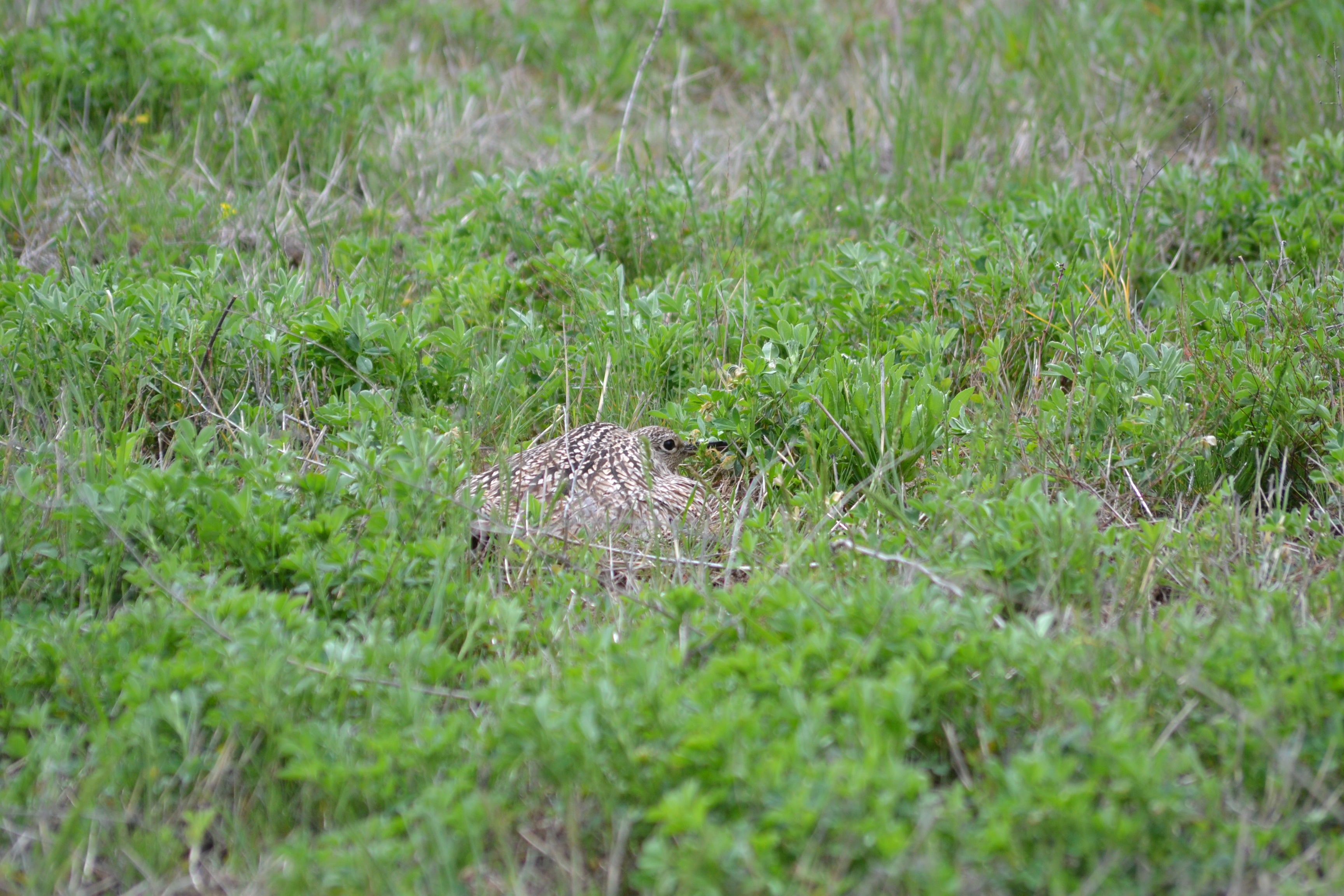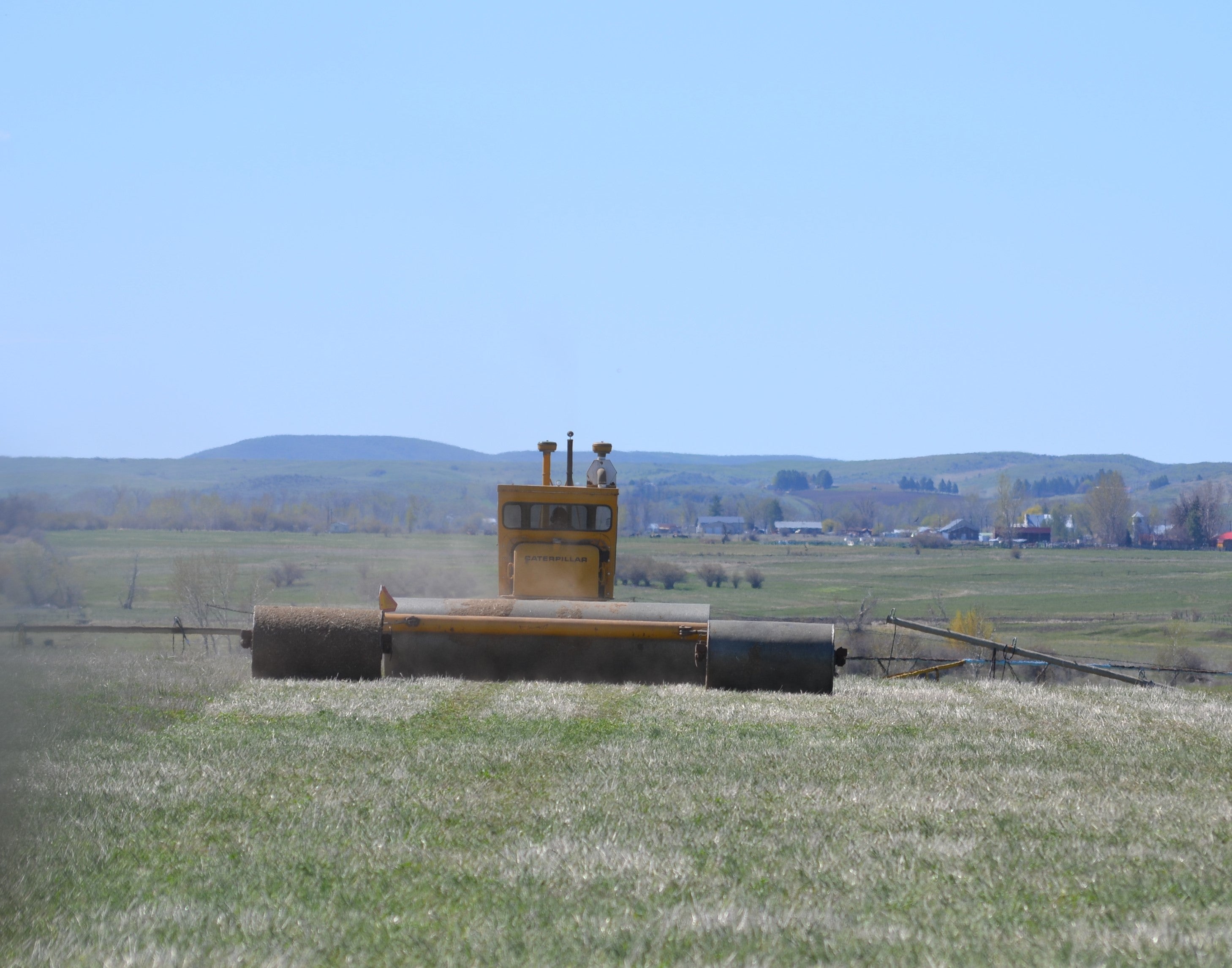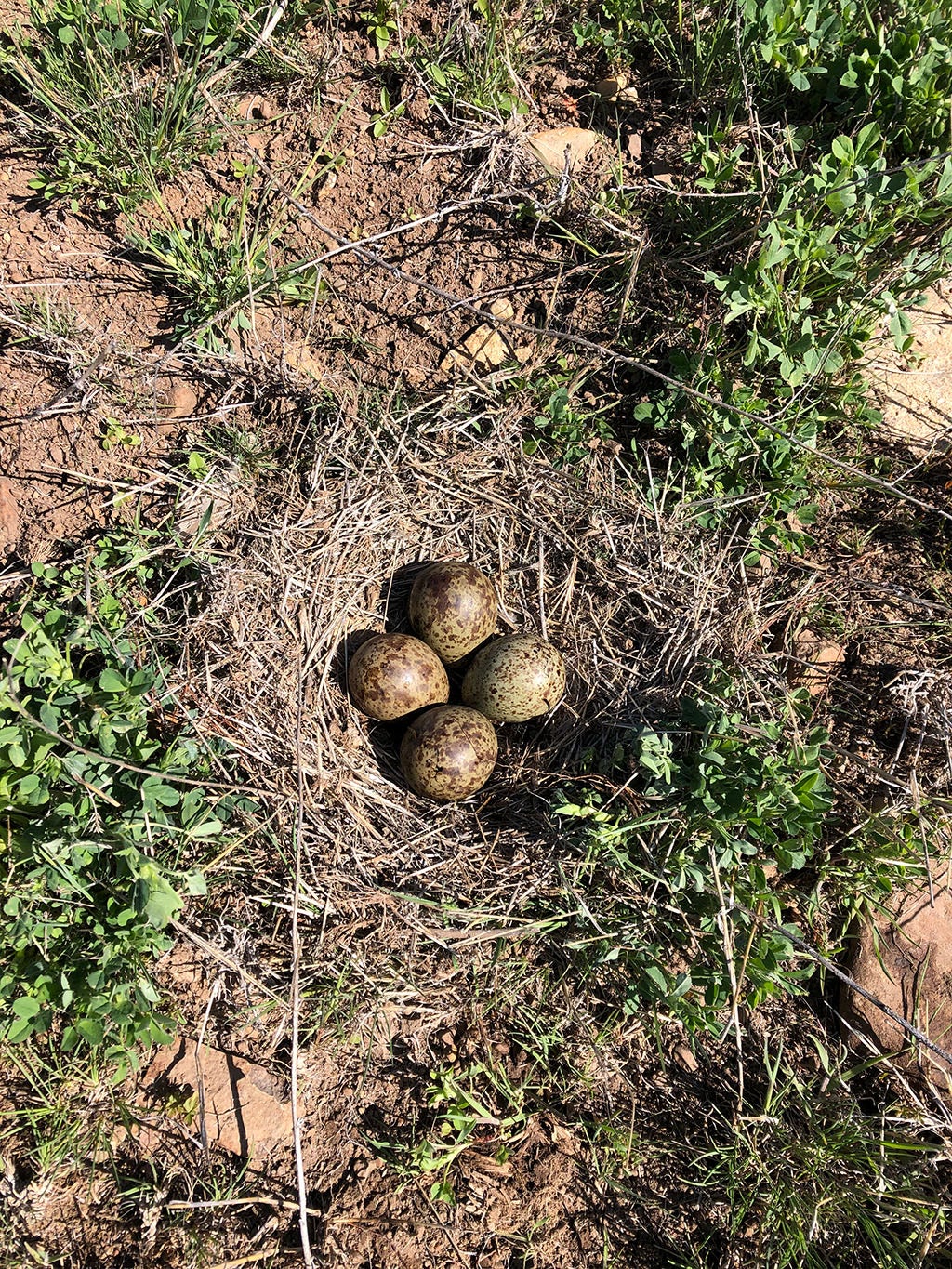By: Heather Hayes
You may remember the Curlew Crew’s first nest discovery in Indian Valley named “Dozer”? This curlew was initially observed napping 300m away from her nest. This anti-predator strategy is useful as it draws attention away from the few eggs laid just days before. Her nest was located in a pasture called “The Rock Garden” by locals because it was littered with rocks of varying shapes and sizes. At first glance, this appeared to be a brilliant location to camouflage a nest! Scientific evidence suggests that nesting near objects like cow patties and rocks offer curlews additional cover to thwart aerial predation. Once all four of Dozer’s eggs were laid, the pair settled in to share the lengthy, and often times treacherous, month-long incubation process.

During a nest check the following week, biologists noticed something peculiar in the distance slowly moving through the field though unable to make out what it was over the hillside.
Scrambling to a higher vantage point with binoculars in hand, the answer to this mystery was quickly revealed…
It was a massive LAND ROLLER! This agricultural implement consisting of large drums (rollers) is dragged through a field to level out high spots and push rocks into the ground to prepare the land for planting.

No amount of defensive mobbing of this “steel predator” was ever going to save Dozer’s nest.
But luckily for this pair of curlews, the rancher stepped in without hesitation and offered to designate a wide area around the nest so the land roller could easily and safely navigate past the eggs. PHEW! They were safe! For now…
After weeks of watching the parents switch successfully on and off the nest, even with a center pivot moving slowly overhead watering the field throughout the day, there was to be more trouble on the horizon for this curlew pair. As hatch day approached, Dozer flew in for her routine morning “switch” during a nest check. Upon arrival, she sat then quickly stood up, circled with her bill in the nest cup, then sat again. This behavior continued for roughly 15 minutes leading biologists to believe there may have been a freshly hatched chick or two that she was trying to accommodate underneath her.
But those thoughts quickly turned ominous when the male was observed scraping a new nest cup.
It appeared that the nest may have failed on the male’s watch the previous night, and researchers were witnessing the female’s initial discovery of nothing more than a few bits of broken eggshells left in the nest that morning.
After thoroughly investigating the failed nest and the surrounding area, biologists had discovered the presence of recently nested Black-billed Magpies in the shrubs along the fence line bordering the field, placing them high on the “suspected culprit list”.
Wasting no time, these determined parents re-nested a week later with another clutch of four eggs approximately 200m from their original nest cup (and thankfully the Magpies)! This new full clutch was particularly exciting because often times 2nd nest attempts have fewer eggs than the previous attempt.

Will their second attempt be successful? Will their new nest site offer them better protection from the Magpies and other lurking predators? Stay tuned for more exciting updates on Indian Valley’s celebrity curlew couple of the West Central Mountains!!